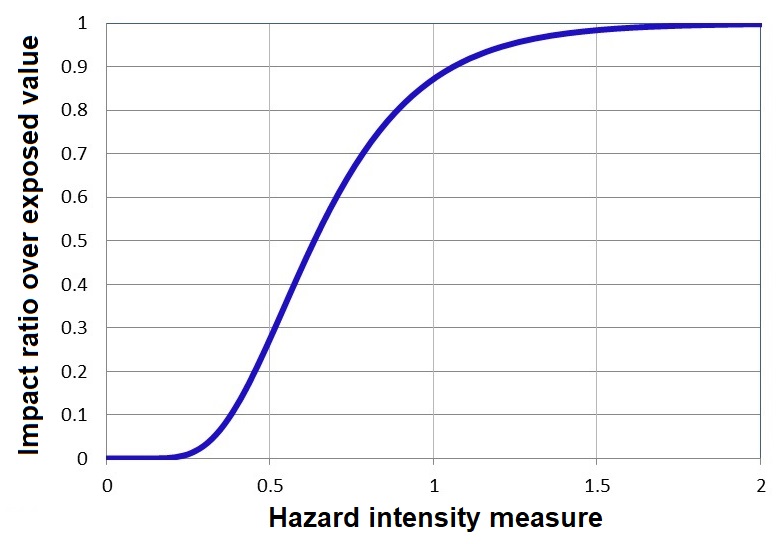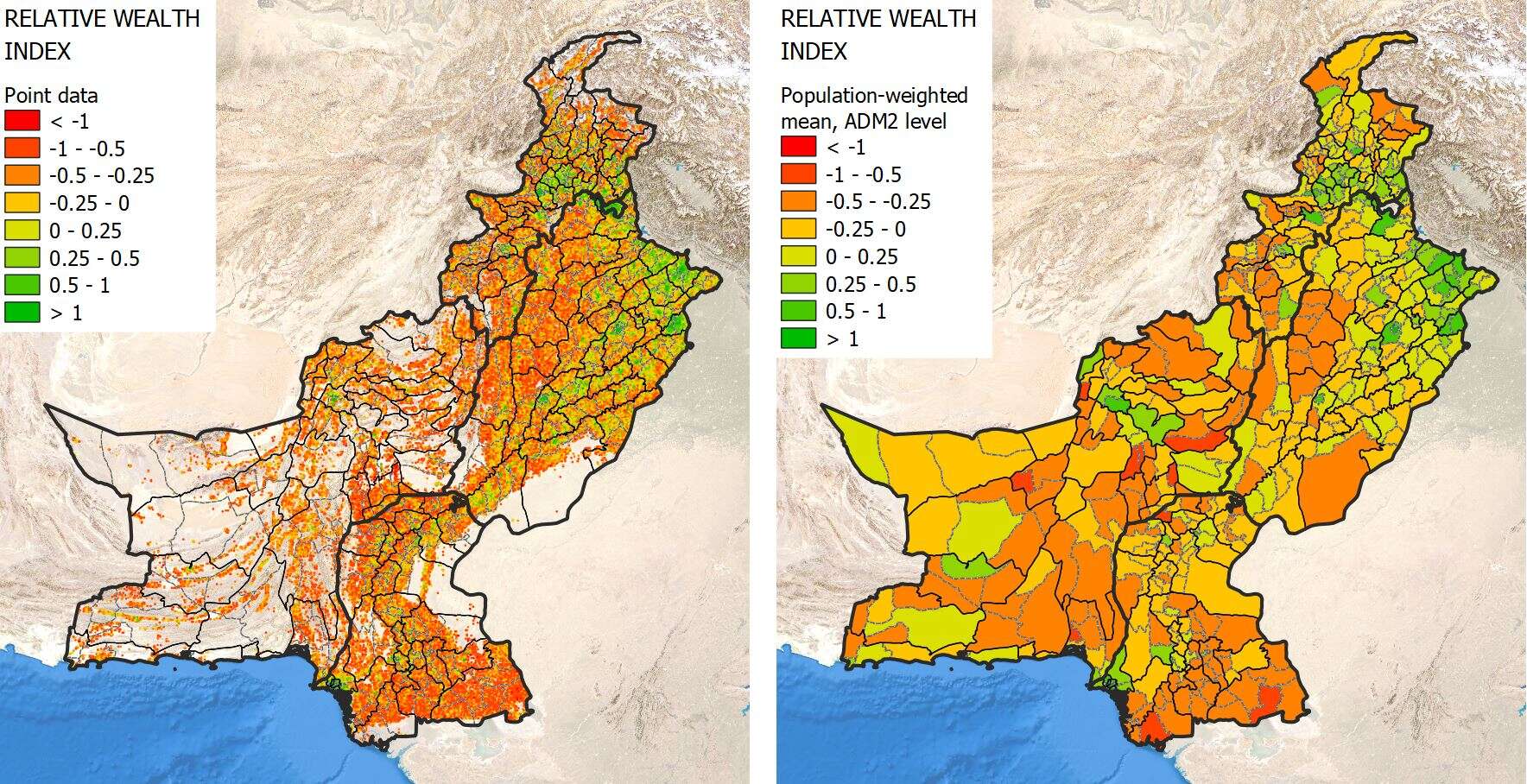Vulnerability#
The vulnerability of people and asset which are exposed to hazard events determines how likely they are to suffer an impact.
See also
The conditions determined by physical, social, economic and environmental factors or processes which increase the susceptibility of an individual, a community, assets or systems to the impacts of hazards (UNDRR 2019).
For positive factors which increase the ability of people to cope with hazards, see also the definition of coping capacity.
The concept of Vulnerability has a wide interpretation both in the literature and in the risk management practice; this is reflected by the variety of data that could represent it.
Vulnerability data and models#
Two main components of vulnerability are typically accounted:
Impact models: draw the relationship between the intensity of hazard and the predisposition of damage suffered by specific exposed categories into actual impact. They are called
fragility functionswhen they describe a physical damage (e.g. flood depth/damage functions). Impact models can be quantitative, providing an absolute (i.e. USD) or relative estimate (i.e. ratio of total value) of the damage; or qualitative, classifying the impact in nominal categories.

Fig. 2 General example of fragility curve linking hazard intensity measure (x) and probability of loss (or loss ratio) over exposed value (y).#
Note
Not all exposure categories are affected in the same way by physical hazards - some hazards are more relevant for one category than another.
Socio-economic conditions: describe the differential susceptibility of exposed categories to suffer damage, i.e. areas under poverty conditions and high dependency rate are more likely to suffer damage compared to wealthy communities, under the same hazard event. These are measured using spatial indices based on demographics (sex, age composition, dependency rate) and socioeconomic statistics (wealth, GDP and average salary, among others), and are semi-quantitative metrics (index score; ranking).

Fig. 3 Example of wealth indicator (Relative Wealth Index) over Pakistan; can be used as proxy to estimate socio-economic vulnerability.#
RWI is one of the options, but a whole range of different proxies can be used to estimate socio-economic vulnerability:
Population density and urbanization rates
Informal settlement prevalence
Age demographics (elderly and child populations)
Education levels
Gender equality indices
Governance stability
When adopting multiple indices, you need to first check for double counting and redundant information. One way to do it is by Principal Component Analysis (PCA), e.g. dropping indicators found with correlation > 0.7. Then, you’ll need a weighting schema to combine these indices together into one score: using equal weights, inverse-correlation weighting, expert opinion, or following IPCC’s guidelines, where Vulnerability is a combination of 1) Sensitivity and 2) Adaptive capacity.

Fig. 4 IPCC AR6 framework of disaster risk: Vulnerability is framed as the combination of Sensitivity and Adaptive Capacity.#
1. Sensitivity Component Combination (IPCC AR6 Health Chapter)#
Biophysical sensitivity (age, health status, diseases): 40%
Socioeconomic sensitivity (poverty, education): 35%
Institutional sensitivity (governance, service access): 25%
Rationale from IPCC: Biophysical gets highest weight because it’s most directly linked to climate health impacts. Socioeconomic amplifies this. Institutional affects both. Translated into weights equation:
Sensitivity = 0.4×(demographic vulnerability) + 0.35×(RWI) + 0.25×(health system burden)
Where:
Demographic = 0.6×(age dependency) + 0.4×(population density)
Health burden = disease prevalence indicators
2. Adaptive Capacity Component Combination (IPCC AR6)#
Economic resources (wealth, insurance): 30%
Technology & infrastructure (healthcare systems, early warning): 30%
Institutional capacity (governance, planning): 25%
Social capital (networks, knowledge): 15%
Vulnerability models carry limitations related to their applicability. Their quality depend on scale, resolution, model quality, training period and input data quality. As a rule of thumb, their fitness for application in the context of a risk screening or assessment exercise depends on the scale of the risk analysis, i.e. locally-sourced models are expeceted to be best fitted for local scale assessment (e.g. city level), while global models are best suited for national or sub-national estimates.
In the context of developing countries, however, a global model is often the only available source for a location. In those cases, the application of the global model must be taken with caution and correctly interpreted acknowledging the limitations.
